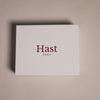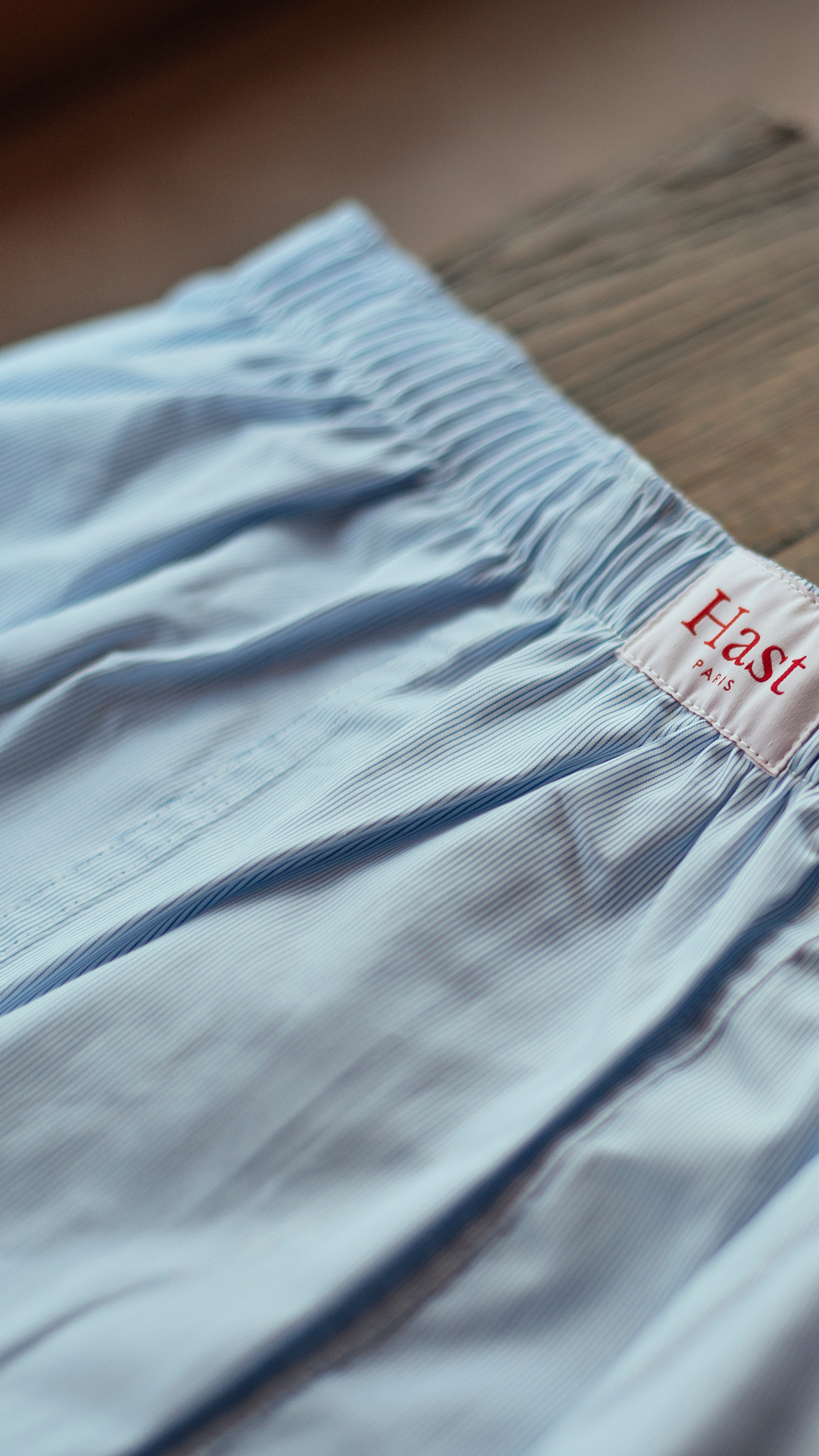Upcycling at Hast: common sense in the service of responsibility
On an international scale, the impact of the textile industry constitutes a social, health and environmental tragedy. Behind this disaster? The unscrupulous production of raw materials, the polluting and energy-intensive transformation of fibers, the transport of finished products, the maintenance of clothing and even their waste.
At Hast, this situation saddens us as much as it alarms us, which is why we have made the strong choice to place responsibility at the heart of our identity.
Since 2012, we have been prioritizing natural and recycled raw materials, working with European partners and locally manufacturing sustainable and timeless clothing. On the subject of waste, we have chosen upcycling to enhance the value of fabric scraps from the production of our pieces , and it is to this process that we dedicate today's article.
The life cycle of the products in question
As a brand, the question of the life cycle of creations seems absolutely crucial to us. In fact, it is impossible to claim eco-design if the route of the clothes is not known, controlled and optimized.
First of all, it is therefore appropriate to keep in mind the trajectory common to all textiles (with the exception of the sixth phase which is, for its part, more random):

Source: reseauethique.org
To be credible, any ambition for responsible production must therefore be accompanied by measures to reduce the impact of each of these steps. At Hast, this thinking has permeated our strategy for more than ten years, and we strive to prove it to you every day . For example:
- We have achieved 100% natural and/or recycled materials in our collections (most often organic and labeled).
- We produce 95% in the European Union.
- We try to reduce our CO2 emissions as much as possible by producing as close as possible to demand with increasingly responsible methods.
- We were the first French brand to use compostable packaging and recycled cardboard.
- We have introduced recycling terminals in store to allow our customers to drop off unused pieces (Hast or not) in order to transform them into recycled fabric. The aim is to promote the principle of circularity.
In a word, and while cultivating an authentic passion for beautiful clothes, we aspire to produce ours as fairly as possible. Upcycling, of course, is part of this commitment.
Upcycling, a definition
To be completely honest, the manufacturing stage always involves a loss of material . In practice, we cut pieces of fabric/knitted fabric from panels of fabric to assemble them and give body to the clothes, which necessarily leaves some residue. Upcycling is precisely the requalification of these residues.

In fact, we reuse these scraps to make other pieces, which avoids waste while maximizing the use of the high-end materials that we select. As a result, the quality of the upcycled product is in no way degraded: it is the same resource, simply reassigned to another mission.
Unlike recycling, which involves treating waste to recover the material and make a new item, upcycling is more about “reuse”.
Let's take a concrete example: remelting and remoulding a glass bottle to make a jam jar is recycling. Using an empty glass bottle to make a vase or a candle holder is upcycling.
To put it simply, recycling focuses on reusing the material of the product, while upcycling focuses on reusing the product itself.
Upcycling according to Hast
At Hast, we see in this art of diversion a way to combine the useful with the pleasant. To fight against waste and get the full potential of existing materials, we have made several resolutions in favor of upcycling:
- First of all, we use the fabric scraps from our shirts to make our boxer shorts . In double-twisted poplin, twill or oxford, you will find ultra-luxurious underwear with absolute comfort. Nothing is lost, everything is transformed.
- Then, we sometimes find what we are looking for at suppliers of so-called "dead stock" fabrics. Leftovers from old collections, these rolls of material constitute dormant stocks and sometimes hide real treasures. For example, for the capsule collection published for our 10th anniversary, we found our red selvedge at Nona Source , the resale platform for exceptional materials from the LVMH group's Houses (Louis Vuitton, Dior, Céline, Givenchy, Loro Piana, Loewe, Fendi, Givenchy, etc.). A way of making the most sublime materials accessible to you, without mobilizing a single gram of CO2 for its manufacture. And for good reason, the fabric that pollutes the least remains the one that already exists. In this spirit, we will not fail to repeat this experience to make certain pieces in the future.
- Finally, we offer our unsold items to associations such as AIDES or Cravate Solidaire , a collective facilitating access to formal clothing for people looking for work.
Furthermore, other forms of upcycling exist and seem interesting to us, even if we do not yet exploit them (in-store repair service, creation of patchwork clothing, sharing of "Do it yourself" content, etc.). With the modesty and humility that have characterized our eco-design approach since 2012, it is likely that we will look into it in the near future to perfect our model , with the unchanged ambition of controlling our impact and optimizing the use we make of our materials.
Accuracy at the heart of our ambitions

At the time of writing, the textile sector is one of the most polluting in the world, consuming 4% of the planet's available drinking water, emitting more than a billion tonnes of greenhouse gases annually and enabling the consumption of 130 billion items of clothing each year.
Fast, disposable and generally unconscious, fashion has disastrous consequences both socially and ecologically. For Hast, committed since its creation to a greener and more responsible industry, working to clean up each stage of a garment's life cycle is not an option. In addition to the care we take in sustainable production, upcycling is in this respect a relevant way to control our stocks of materials and revalue the scraps.
To tell the truth, it's a method that we like so much that we're thinking more and more seriously about a 100% upcycled capsule collection. On that note, we advise you to keep your eyes open: it's a project that could see the light of day sooner than you think...






